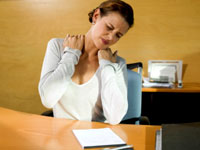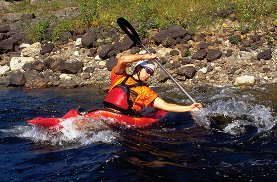
The orthopedic surgeons at OSS and the physical therapists at Seattle Orthopedic Center (SOC) see a fair amount of orthopedic injuries from all walks of life ranging from body-related complaints – some from accidents, some from surgery and some from extreme sports. And yet, some of the most common injuries come from sitting at your desk all day.
“Desk Jockey”
Commonly dubbed a “Desk Jockey” means that most of your days is spent sitting at your desk, on the phone, pushing paper, and using your computer, laptop or tablet.
When compared to more physical occupations, a Desk Jockey wouldn’t seem like someone experiencing a joint injury but more like a paper cut or stapler accident. All the work you do on your computer, there are several ways to incur both a neck and shoulder injury caused by repetitive motion.
All the mouse click you make in a day, improper monitor positioning, chair height and keyboard position may cause neck and shoulder pain that can become acute, causing a severe amount of fatigue. Although most of these injuries may not become chronic in nature, for some, the shoulder pain and neck pain persists.
OSS offers these tips while working at your desk to help alleviate neck and shoulder pain:
- Simple Ergonomics – Set up your workstation so that your keyboard, mouse, monitor, and chair are in the optimal position for your body.
- Move – Take breaks; stop working for a moment, get up and move. Change positions into your day to help relieve the tension and reduce strain in your neck, back, shoulders, hips and knees.
- Stretch – If you spend several hours a day typing, there are common finger and wrist muscles that get used over and over again. This repetitive motion can cause strain and lead to repetitive stress injuries.
- Sleep – A good night’s rest is a great chance to give your back and neck some support and relief for as long as you’re lucky enough to remain horizontal. Sleep also plays an important restorative role in healing injuries and keeping the body healthy.
According to Nicole Marble, PT, “As physical and occupational therapists, we help patients achieve structural balance through education, therapeutic exercise, neuromuscular re-education, and manual therapies that mobilize soft tissues and joints. This will decrease pain and maximize function whether our patients sit for prolonged periods or participate in high level sports and activities.
Here at SOC/OSS our physical therapists are able to offer personalized care with 45-minute one-on-one treatment sessions. We also work closely with the orthopedic surgeons to create and maintain a physical therapy program that is designed to get you back to what you love. “
If you are suffering from joint pain and injury, contact OSS to schedule an appointment with one of our physicians at (206) 633-8100.



 Who knew you would have to watch your back, or should we say hand, when making the family’s homemade guacamole? Avocados; they look innocent enough, but did you know that avocados are the cause of hundreds of hand injuries a year?
Who knew you would have to watch your back, or should we say hand, when making the family’s homemade guacamole? Avocados; they look innocent enough, but did you know that avocados are the cause of hundreds of hand injuries a year?

